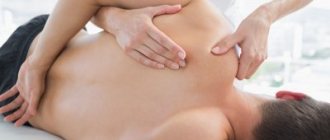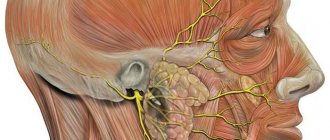How to treat ulnar nerve neuritis so that it no longer bothers you
The ulnar nerve is located in such a way that it is constantly exposed to adverse external factors. In fact, this is the only nerve in the human body that is located a few millimeters from the surface of the skin and is not protected by anything.
As a result, any injury can cause acute ulnar neuritis. Most people have encountered such an unpleasant symptom as acute pain in the elbow at the slightest blow - in this case, it is the nerve that is affected.
Possible causes of pain
The human elbow is the point where three bones meet and the union of each two of them forms a joint. These joints are located in a common joint capsule. Around them are ligaments, muscles, tendons, nerves, blood vessels. Damage to any of the elements of the system affects the condition of the elbow, causing discomfort to its owner. If you hit your elbow, the unpleasant sensations are most likely due to injury.
Dislocations, sprains, fractures, ruptures - all this is a reason for an immediate visit to the doctor. Even in the case of injury, the cause of pain can be complex if the complex elbow system was initially disrupted due to an inflammatory process caused by an undiagnosed disease. Pain in the elbow joint can appear “out of the blue”, without visible preconditions.
You shouldn’t hope that everything will go away on its own - it’s better to take control of the situation, see a doctor and get treatment. Here are a few diseases that can cause discomfort or pain in the elbow.
- Elbow arthritis. Its danger is that, having arisen in one joint, it “spreads” to others. The prerequisites for arthritis can be infectious or autoimmune diseases, gout, tuberculosis - and even such “harmless” ailments as vitamin deficiency or simple food poisoning. Not only pain is felt, but also stiffness of movement, which over time can turn into complete immobility.
- Elbow bursitis. Inflammation in the triple joint capsule manifests itself in the form of swelling, an increase in temperature is possible, and even habitual actions result in severe pain. If you do not feel discomfort, but see swelling in the elbow joint, this could also be bursitis, which has not yet reached the stage at which constant pain will force you to go to the doctor.
- Hernias in the spine can also cause elbow pain. If your hand hurts, regardless of whether you do something with it or not, if it seems to you that it is weaker than usual, there may be problems with the vertebrae.
- Epicondylitis. Another name for epicondylitis is “tennis elbow.” If you like to play tennis, you need to choose the right racket and learn hitting technique from a coach. Due to the wrong choice of equipment and errors in technique, muscles become overstrained, resulting in injuries that are difficult to recognize even with the help of special equipment. Inflammatory processes begin, which increase pain. This disease is diagnosed both in athletes and in patients who do not engage in sports at all, but perform repetitive movements. Do you knit for hours? Did you dig up the entire garden? Do you work on the computer a lot? You are at risk.
Causes of the disease
A variety of factors can trigger ulnar nerve neuritis, from illness to injury. External traumatic mechanism is the most common cause of nerve damage:
- dislocations of the hands, forearm, elbow;
- bruises of the limbs;
- fractures of the elbows, arms, hands and shoulders.
Due to injuries, compression of the cubital canal develops. But other factors—diseases—can also trigger the pathology mechanism:
- purulent, infectious and viral lesions of joints;
- deforming joint diseases - arthrosis, arthritis;
- damage to the nerve sheaths, characteristic of various types of sclerosis;
- vascular aneurysms compressing the nerve;
- neoplasms and processes that cause enlargement of lymph nodes.
In addition to pathological causes, there are non-pathological factors that cause ulnar neuritis. For example, the habit of leaning on your elbows when talking on the phone is one of the most common causes of illness.
Compression of the ulnar nerve is possible during sports, especially during lifting of athletic equipment. Sometimes neuritis develops due to prolonged exposure to a drip, which leads to an unnatural position of the elbow.
Diagnostic methods
The main rule that must be taken into account in order to effectively treat ulnar nerve neuritis is an up-to-date diagnosis. Only after examination and consultation with a doctor can therapy begin. After all, if you do not eliminate the causes, then you will not be able to get rid of the disease. The following methods are used for diagnosis:
- detailed patient interview;
- neurological examination;
- study of medical history;
- Ultrasound of the ulnar nerve;
- electromyography and electroneurography as the best methods for determining disorders;
- x-ray, MRI and CT to identify the condition of soft and hard tissues.
It is also necessary to distinguish neuritis from neuralgia, which is not characterized by inflammatory processes.
Tactics for treating the disease
If the diagnosis revealed ulnar nerve neuritis, the doctor selects adequate treatment. This means that you need to get rid of the causes and eliminate the symptoms that cause maximum discomfort to the patient.
Important! The approach to therapy must be comprehensive, otherwise the desired result will not be achieved.
You should also remember that treatment only with medications or traditional recipes is not the best choice. The use of one method leads to the fact that any area of the disease falls out of attention. For example, drug therapy without exercise therapy deprives the patient of the opportunity to restore the strength of damaged structures and restore normal limb mobility.
Drug therapy
The main goal of treating ulnar nerve neuritis is to eliminate pain when it comes to medications. It is also necessary to relieve swelling, improve blood circulation and nutrition to the damaged area.
Important! One of the best groups of drugs that help in the fight against pain and inflammation are NSAIDs: Diclofenac , Ibuprofen , Nimesulide .
Edema is eliminated with the help of diuretics, and B vitamins are prescribed to improve the condition of muscle tissue. There is another unique drug used in the treatment of neuritis - Neuromidin . It restores damaged nerve fibers in terms of the conduction of electrical impulses through them.
Eastern treatment
After making a diagnosis, the doctor will prescribe treatment: drug therapy, aspiration (for bursitis). Most diseases also require physical therapy, massage or exercise therapy, either as the primary treatment or as an additional therapy to restore the functionality of the hand after removing the cause of the pain.
Eastern medicine solves all these issues. Injections of drugs into active points help damaged tissues regenerate where it is most needed, osteopathy slows down degenerative processes and restores joints, acupuncture relaxes and relieves pain. Result: pain in the elbow joint goes away quickly and does not return.
Is self-treatment effective?
There is only so much you can do at home. Warming to reduce discomfort in the joint, pain-relieving ointments - that’s all. Medicinal herbs help, but it is better not to do this yourself, but to contact a herbalist (we have such specialists in our clinic), who will determine which herbs will help in your case the fastest and, most importantly, will not harm. You should not rely on treatment methods found on the World Wide Web - it would be more effective to visit a doctor.
What to do to prevent pain
To avoid pain in the elbow joint, do exercises more often when doing monotonous work - both at the computer and in the garden. Take breaks, stretch your arms, twirl them, stretch, do a few bends. Watch how you sit - poor posture affects your back health, and back pain is reflected in your elbows.
Before heavy loads, also do a warm-up, and after them, a cool-down, so that both the elbows and the whole body enter and exit the load gradually, without jerking. Monitor the general condition of the body, preventing the progression of infectious diseases. If you know that your elbows are your weak point, wear special elbow pads before loading.
Sign up for a free initial appointment
Ulnar nerve neuritis
What is ulnar neuritis? How does the ulnar nerve work, what functions is it responsible for? Why does the disease occur? Modern effective treatment methods.
Ulnar nerve neuritis is an inflammatory disease. It ranks second in prevalence among arm nerve lesions after radial neuritis. The ulnar nerve runs along the inner surface of the shoulder, then descends to the forearm and hand. In the area of the internal epicondyle - the bony protrusion at the bottom of the shoulder on the inside - it is close to the skin, so it is often bruised in this place.
The ulnar nerve innervates the elbow joint, provides movement in the muscles of the forearm and hand, and sensitivity of the skin in the area of the little finger and ring finger. With neuritis, these functions are disrupted.
How to understand what and why it hurts?
Focus on the type of pain, its location and intensity, remember what preceded the onset of pain in the elbow joint: general malaise, injury, minor discomfort? Depending on this, you can assume a possible diagnosis, but it would be much more correct to seek professional help.
The doctor will examine your arm, ask questions, take tests if necessary and refer you for additional examinations, and if he is a doctor of oriental medicine, he will examine the entire body, identifying the relationship between pain in the elbow joint and how you feel in general.
Crunching in joints - when to worry
Joint pain at rest
The main causes of the development of ulnar nerve neuritis:
- Compression of the nerve where it passes near the elbow. Most often this occurs in people who constantly rest their elbows on a table (office workers), a workbench, or a machine in a factory.
- Injuries. Damage to the nerve trunk can occur with fractures of the internal epicondyle at the bottom of the humerus.
- Some infections. For example, typhoid, typhus.
- Poisoning. The disease often occurs in people who chronically abuse alcohol.
- Endocrine diseases. Neuritis can develop against the background of diabetes mellitus and thyroid dysfunction.
- Hypothermia.
If you experience numbness or impaired movement in the muscles of your arm, do not engage in self-diagnosis or self-medication. The correct treatment is the one prescribed by a competent medical specialist after examination and examination.
Causes of pain in the elbow joint
Traumatic injuries
The most common traumatic cause of pain is bruises.
They occur after a blow or fall on the elbow, manifest as moderate pain, which decreases over several days after the injury, and is accompanied by local swelling and some limitation of movements. With tears and ruptures of the ligaments, all symptoms are more pronounced, the pain syndrome intensifies when attempting passive movements in the direction opposite to the damaged ligament. With periarticular and intra-articular fractures of the lower end of the humerus, the upper part of the ulna, the neck and head of the radius, a sharp explosive pain occurs, which makes the eyes dark. Subsequently, the intensity of pain decreases, but the pain remains difficult to bear and intensifies with the slightest attempt to move the joint.
With fractures of the humeral condyles, fractures of the coronoid process, and Monteggia injuries, diffuse pain is felt deep in the joint. Fractures of the head and neck of the radius manifest as more localized pain in a specific area of the elbow. With olecranon fractures, pain is felt along the back of the elbow. Other symptoms of fractures are significant swelling, deformation, and severe pain with axial load.
Dislocations of the bones of the forearm are accompanied by unbearable pain, a clicking or crunching sound at the time of injury. Subsequently, the pain almost does not decrease until reduction. The joint is swollen, sharply deformed, active movements are impossible, and when passive movements are attempted, spring resistance is detected. In children under 5 years of age, after stretching or tugging on the arm, subluxation of the radial head sometimes occurs, which is manifested by moderate aching pain in the joint, which intensifies when trying to bend or palpate the ulnar fossa.
Inflammatory diseases of solid structures
Arthritis of the elbow joint is characterized by constant dull wave-like pain that intensifies in the early morning hours. The intensity of the pain varies from slight to very strong, depriving sleep and significantly limiting movement. The clinical picture is complemented by diffuse swelling, redness, local hyperthermia, stiffness, and dysfunction of the joint.
When infected, a severe variant of the disease develops - purulent arthritis, which is characterized by diffuse bursting, twitching or throbbing pain, combined with severe swelling, diffuse hyperemia, local hyperthermia, a significant increase in general body temperature, and symptoms of general intoxication.
Post-traumatic osteomyelitis of the periarticular ends of bones occurs after open injuries and operations on the joint, manifested by increasing sharp pain, rapid deterioration of the condition, general and local hyperthermia, and the appearance of purulent discharge from the wound. When transitioning to a chronic form, the pain becomes less intense, periodic, pulling or boring, and intensifies after exercise. A fistulous tract with purulent discharge is detected.
Hematogenous osteomyelitis affects the lower part of the humerus less often than the upper, and is detected in children. The pain quickly increases within 1-2 days, becomes tearing, throbbing, unbearable, intensifies even with minor attempts at movement, which makes patients “freeze” in bed. They are supplemented by general hyperthermia, chills, swelling, and redness of the joint.
Inflammatory pathologies of soft tissues
In acute aseptic bursitis, the pain is moderate, dull, bursting. Local edema, hyperthermia, and a fluctuating formation above the olecranon are observed. In the chronic form, the pain subsides, bothering mainly with pressure and physical activity. Swelling and redness disappear, the formation remains, the skin above it darkens. When infected, the pain syndrome increases sharply, the pain becomes tugging, bursting, and pulsating. The elbow turns red and swells. The temperature rises, symptoms of general intoxication appear.
Synovitis is not an independent pathology; it occurs with injuries and various diseases of the elbow joint. It manifests itself as a constant dull diffuse bursting pain, which intensifies as fluid accumulates. The joint increases in volume, its contours are smoothed. Upon palpation, fluctuation is determined.
Enthesopathies
A widespread cause of pain in the elbow joint is enthesopathies - inflammatory and degenerative lesions of the tendons at the point of their attachment to the bones. With lateral epicondylitis (tennis elbow), dull, stabbing or aching pain is localized along the outer surface of the joint, radiating to the shoulder and forearm. They intensify with load, extension of the middle finger with resistance. Combined with increasing weakness of the hand.
Medial epicondylitis is provoked by repetitive hand movements and occurs in golfers, gymnasts, tennis players, seamstresses, and typists. The symptoms are the same as for lateral lesions, but differ in localization - pain is felt inside, not outside the elbow; upon palpation and flexion of the hand, pain appears above the internal epicondyle of the shoulder.
Degenerative diseases
Arthrosis of the elbow joint in the initial stages is accompanied by unpleasant sensations, slight pain at the beginning of movements and after heavy loads. As the pathology progresses, the initial pain becomes more pronounced and is combined with stiffness; after exercise, the pain persists longer at rest. Movements in the joint are accompanied by crunching sounds.
Later, pain appears even with little physical activity, bothers you at night, and becomes constant, aching, pulling, and boring. The joint aches due to the weather. Movements are limited, and the ability to self-care suffers. Deformations of varying severity are formed, contractures develop.
With chondromatosis, loose bodies form in the joint, which can become pinched and impede movement. This determines the characteristics of the pain syndrome. Along with dull, pulling or aching pain, intensifying after physical activity, piercing (shooting, explosive) pain periodically occurs, which is combined with joint blocking.
Osteochondritis dissecans most often occurs in children and young people and is manifested by pain that increases throughout the year. First, there is discomfort without clear localization. Then moderate dull pressing or aching pain appears, combined with a slight crunching and “jamming”, blocking of the joint. Subsequently, the pain intensifies and then weakens, blockades become more rare.
Autoimmune diseases
The elbow joint is often affected by rheumatoid arthritis. The characteristics of pain depend on the activity of the rheumatic process. With grade 1, pain in the joint is insignificant, usually aching, appearing in the morning and after exercise, combined with transient stiffness. For grade 2, diffuse deep nagging pain at rest and during movement is typical.
During movement, the pain intensifies, which leads to limited function of the joint. Prolonged stiffness, recurrent effusions, and local redness of the skin are observed. At level 3 of activity, the pain is intense, constant, and exhausting. They are combined with severe local hyperemia, constant stiffness, persistent synovitis, severe limitation of mobility, development of subluxations and contractures.
For rheumatism, multiple joint damage is typical. Pain quickly migrates from one joint to another. The pain is strong and varies significantly in nature (sharp, dull, burning, pulsating, pressing, pulling). They arise after an acute infection, persist for several days, after which they disappear or significantly weaken.
With systemic lupus erythematosus, pain in the elbow joints is usually symmetrical. Several joints (shoulder, elbow, knee, etc.) on one side of the body may be affected. In mild cases, the pain is insignificant, short-term, local, dull. For a severe course, long-term progressive nagging or bursting pain is typical, which intensifies and weakens in waves, combined with swelling and hyperemia. Severe restrictions on mobility are uncommon.
Neoplasms
Benign neoplasia of the articular ends of bones, cartilage and surrounding soft tissue structures is characterized by a long course. The pain is insignificant, short-term, dull, nagging, with a fairly clear localization. Symptoms may remain unchanged for a long time. The growth of the tumor provokes an increase in pain; in some cases, due to compression of the nerves, radiating pain occurs, a sensation of “electric shock” or a shooting along the forearm.
Malignant tumors manifest themselves as rapidly progressive pain. Initially, the patient complains of a dull pain of uncertain localization with a tendency to intensify at night. Then the pain spreads throughout the joint, acquires a jerking, burning, bursting or cutting character, restricts movements, and is combined with local swelling, increasing deformity, asthenia, low-grade fever, and loss of appetite. At the final stage, the pain becomes constant, painful, unbearable, and can only be eliminated with narcotic drugs.
Other reasons
Ulnar nerve neuropathy and cubital tunnel syndrome manifest as nagging pain in the form of a strip from the internal epicondyle of the shoulder to the hand. Painful sensations are combined with numbness of the 4th and 5th fingers, intensifying when the joint is flexed. When pressure is applied to the elbow, there is a stabbing pain or sensation of lumbago from the elbow to the little finger.
Sometimes pain in the elbow occurs due to diseases of the cervical spine. This type of pain is characterized by a shooting sensation, spreading along the limb - from the shoulder to the hand. Irradiation of pain to the left elbow joint is possible with ischemic heart disease and myocardial infarction. Pain syndrome in this localization can also develop with mental illness and depressive disorders, taking corticosteroids and anabolic steroids.
Treatment of ulnar nerve neuritis
Treatment of ulnar neuritis is carried out in several directions:
- If the disease is caused by a bacterial infection, antibiotics are prescribed; if it is caused by viruses, antiviral drugs are prescribed.
- If the underlying cause is vascular disorders (the nerve does not receive enough oxygen and nutrients due to impaired blood flow), vasodilators are used.
- If the neuritis is associated with injury, you need to unload the affected arm. For this purpose special tires are used.
- To combat pain and inflammation, the neurologist prescribes drugs from the group of non-steroidal anti-inflammatory drugs (diclofenac, ibuprofen).
- To reduce nerve swelling, diuretics are prescribed: diacarb, furosemide.
- Physiotherapeutic procedures are usually prescribed towards the end of the second week of the disease. Pulse currents, UHF, ultraphonophoresis with hydrocortisone, electrophoresis with novocaine are used.
The best results are obtained if treatment is started in the early stages, as soon as the first symptoms appear. If, despite the therapy, there is no improvement after 1-2 months, the neurologist may raise the question of surgery.
When the first symptoms occur, do not delay visiting a doctor. The earlier treatment is started, the better the result can be achieved. Book a consultation with a neurologist now. In a medical office, this can be done at any time of the day by phone.
The ulnar nerve has a mixed structure: it consists of motor, sensory, autonomic (responsible for the regulation of blood circulation, the work of the sweat and sebaceous glands, and other functions) fibers. It performs the following functions:
- Bending the hand.
- Flexion of the little finger and ring finger, partly the middle finger.
- Spreading and closing the fingers.
- Adduction of the thumb.
- Sensitivity of the inner (ulnar) part of the hand, little finger, partly ring finger, sometimes middle finger.
What symptoms most often occur with ulnar nerve neuritis?
Sensitivity disorders due to neuritis are manifested by numbness in the area of the little and ring fingers, and the inner surface of the hand. At the same time, unpleasant sensations appear in these places: tingling, a feeling as if “goosebumps are crawling” on the skin. Pain in the hand may be bothersome.
Among the movement disorders, weakness is noted in the muscles that spread in different directions and bring the fingers together. The main phalanges (those that connect directly to the hand) of the fingers are extended (since another nerve, the radial one, is responsible for their extension), and the distal ones are bent. As a result, the hand acquires a characteristic appearance - doctors call it a “clawed paw” in their jargon. Gradually, the small muscles of the hand decrease in size and atrophy.
Autonomic disorders with ulnar nerve neuritis manifest themselves in the form of symptoms such as dryness or increased moisture of the skin, cyanosis, and coldness.
Main symptoms of the problem
The main and most unpleasant symptoms of neuralgia are pain that appears in the elbow joint, but can radiate to the shoulder or hand. The pain can be very different: sharp, tingling, aching, dull. In this case, the pain syndrome occurs in attacks.
Elbow pain is often accompanied by a burning sensation or sweating. Sometimes redness and inflammation of the skin are observed in the affected area.
With ulnar nerve neuritis, the victim may complain of complete or partial loss of skin sensitivity. A similar symptom manifests itself in the form of numbness, a tingling feeling of “pins and needles”. The decrease in sensitivity is especially acute in the area of the fourth and fifth fingers.
One of the important signs of neuralgia is a change in the motor activity of the hand, up to complete paralysis. The patient may experience difficulty bending the wrist and bringing the fingers together.
In the absence of competent therapy, the patient may develop trophic tissue disorders in the area of the damaged nerve. They are expressed in the form of blueness and swelling of the skin, increased sweating, and in especially severe cases, the appearance of ulcers.
How does a neurologist identify symptoms of ulnar nerve neuritis?
First of all, the doctor conducts a conversation with the patient - from it it becomes clear that the main problem with which the person came is neurological disorders of the arm and hand. A general neurological examination is required - the doctor needs to assess the state of the nervous system as a whole, because the symptoms of neuritis can be caused by another, more serious disease.
The neurologist can then perform some simple tests that will help identify the characteristic signs of ulnar neuritis:
- If you clench your hand into a fist, the little finger, ring finger and partly the middle finger will not bend completely.
- If you put your hand on the table, palm down, and try to “scratch” the surface of the table with your little finger, you won’t be able to do it.
- Also, in this position, it will not be possible to bring your fingers together and spread them apart; this will be especially noticeable on the middle, ring, and little fingers.











